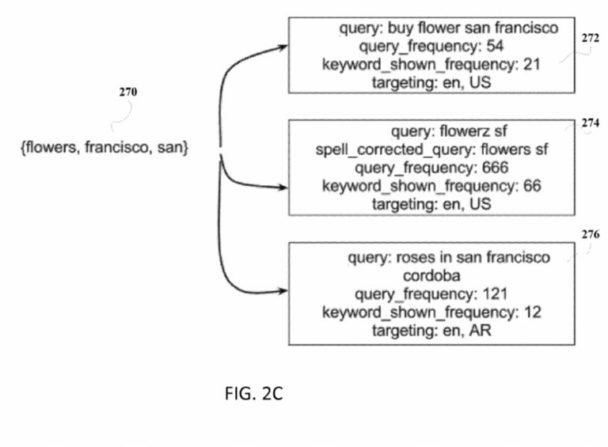Google has changed a resource that many SEOs have been relying upon for years to discover how much search traffic different words and phrases attracted from searchers each month. It’s been an important tool in content creation and SEO planning for many sites that were hoping to potentially rank well in Google. That change was captured in the Search Engine Land article What the heck is going on with Google Keyword Planner?. I wanted to dig in more deeply and see if I could find more information about those changes and share them, and I was able to find a patent granted this week at the United States Patent and Trademark office that included details on the changes to the Keyword Planner.
Related Content:
Two different types of Search Engine Marketing take place over at Google. One is often referred to as just SEO, or Search Engine Optimization, and is also sometimes referred to as “organic search.” It involves Google ranking pages in search results based on a mixture of information retrieval scores (relevance of content on pages) and popularity scores (such as PageRank) and possibly Structured Data markup (such as Schema.org vocabulary). The other type is often referred to as Sponsored Search or PPC or Pay-Per-Click, where site owners can bid on keywords and pay to have advertisements or sponsored search results show up in response to searcher’s queries. Google has made a tool available to both people doing SEO and PPC that indicates how many searches there is each month for specific keywords.
Knowing how much traffic a certain keyword might attract has been an important part of SEO for a long time. Around a decade ago, I had a client who had an important keyword for their business that was often spelled as a two-word compound. Except, they spelled it on their site as one word everywhere it appeared. Google’s Keyword tool told us that 10,000 searches for that term took place every month as a two-word phrase, and 800 searches a month sought the version of the same term as a one-word phrase (Sort of like the difference between “base ball” and “baseball”.) After finding how many more people searched for the two-word version compared to the one-word version, that client agreed to change it everywhere on their site to a two-word version.
Today the two-word version and the one-word version of that compound word both get 14,800 searches a month – the tool shows the same amount for the one word and the two-word version. This change goes deeper than compound words. Misspelled terms, acronyms, singular and plural versions, and synonyms are all showing the same search volumes. Google may look at auction records to see what queries have been returned based upon keywords that people have bid upon. Google is treating these search volume numbers they are showing in the keyword planner as if different queries might fit a broad match of a keyword.
Google was granted a patent this week that fits in well with the changes we see in how they are reporting keywords; and it provides some interesting statements about how people select keywords to use in paid search, like this :
These bids are often based on guesswork. Further, the third-party content provider guesses on the actual user queries with which the third-party content items corresponding to the bids are shown. By placing inappropriate bids, especially on inappropriate user queries, the third-party content provider tends to pay more for third-party content items, thereby increasing costs and reducing profits for the third-party content provider. At present, some third-party content providers manually analyze reports that include third-party content performance data to determine appropriate bid values but the analysis is time-consuming and often done too late to be useful if at all, resulting in efficiency loss and thus lower profit.
The patent that describes this change in how the keyword planner now reports search volume is:
Methods and systems for providing potential search queries that may be targeted by one or more keywords
Inventors: Jan-Moritz Peter Franosch), Wojciech Skut, Bianca Madalina Milatinovici, Lars Kare Engebretsen, Julia Mari Lennerz, Nadine Sandra Gerspacher, Elias Lieberich, and Ritter dam
US Patent 9,378,517
Granted June 28, 2016
Filed: July 3, 2013
Prior Publication Data
Abstract
Systems and methods for providing potential search queries that may be targeted by a given keyword. The method includes receiving, from a third-party content provider, a request to identify one or more search queries that match a given keyword. A table corresponding to the given keyword is identified. The table includes one or more search queries with which at least one third-party content item was selected for display.
The selected third-party content item was selected responsive to a bid for the given keyword. The method determines from the identified table, one or more search queries that correspond to the given keyword. The determined search queries that correspond to the given keyword are those search queries that can be targeted by the given keyword. The method provides for display, the determined search queries that correspond to given keyword.
Take-Aways
The patent provides many more details if you are interested in what it may mean for sponsored search, or want to spend more time behind the curtains looking at the things that have been changed. If you are looking for the search volume for a search on a term such as “pool”, keep in mind that these search volume numbers are for a broad match search, so that search volume number might include searches for things such as “swimming pools,” “pool tables,” and “car pools”. So the numbers may not be a good reflection of how much traffic may be interested in what you offer on your site when you choose a specific keyword phrase to optimize a page for.
Search News Straight To Your Inbox
*Required
Join thousands of marketers to get the best search news in under 5 minutes. Get resources, tips and more with The Splash newsletter:

